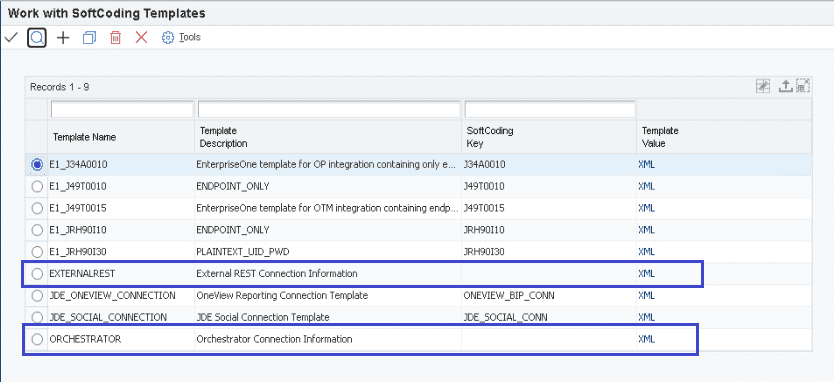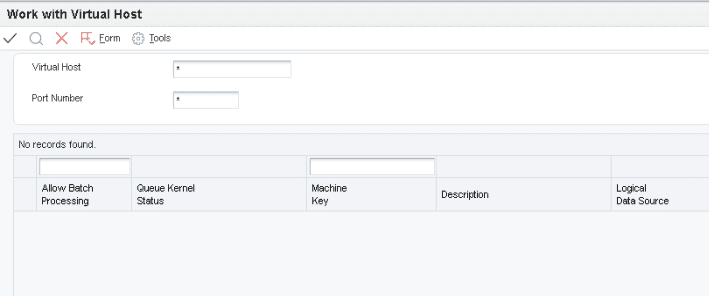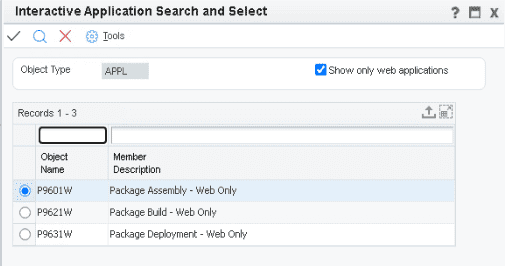JD Edwards Tools 9.2.5 Release: the Good, the Bad, and the Automation
For Oracle’s JD Edwards Tools 9.2.5 Release, one of our consultants highlights the new features, capabilities, and changes that modernize the ERP system.
With JD Edwards Tools 9.2.5, Oracle continues its investment in JDE and pushes forward in modernizing the ERP system with several improvements. This Tools release contains enhancements in several areas, but we are going to focus on three: digital transformation & automation, user experience & quality of life, and administrative & technical.
Beginning with JDE Tools 9.2.5, 32-bit compatibility and support will move into the Sustaining Support lifecycle and eventually be phased out. This means that most JDE implementations will need some TLC as they upgrade to 64-bit. Even us technical guys can pitch a JDE upgrade if it improves performance and keeps the Security & Compliance team happy.
Digital Transformation Changes
Orchestration Assertion Framework
Automation is a buzzword now hitting every industry. While Oracle is no stranger to automation, orchestrations are a powerful way to automate EnterpriseOne (E1) transactions and integrate third-party systems or Internet of Things (IoT) devices. Oracle has enhanced the existing orchestrations allowing them to be used as a simple automated testing tool. Input your testing scripts and slam the system with all those pesky use cases and validations before you get the testing team involved. It’s faster, more accurate, and there is a lot less complaining from the team.
Soft Coding Configuration Extended
Oracle has been slowly rolling out additional support to the Soft Coding Configuration. As of Tools 9.2.5, the connection between AIS and the Enterprise servers is now enabled. Yet again, Oracle is moving into the 21st century and taking advantage of modern-day standards in favor of antiquated tech!
But why is this important? Soft Coding removes entries in the static, and typically unsecured jde.ini files, creating dynamic database record(s). This allows for application-level security to be leveraged, sharing of the record with the developers, and finally updates to targets without restarting servers, services, or downtime.

AIS: Session Initialization
This feature provides you with more choices and controls over how system resources are used to initialize user sessions by allowing the system to establish sessions with AIS at runtime. For sessions that require UXOne, E1 Search, or Form Extensions, the system will establish sessions as required. If there are no calls made for these features, the system will not establish an AIS session. If you’re a technical person like us, the more we can configure, the better the performance squeezes out of the system.
Orchestrator: Enhanced Retrieval of Large Data Sets
This enhancement provides optimizations for Orchestrator. I’ll give you one guess – retrieving large data sets from E1 tables and passing them to ORCH outputs. It also allows the designer to write the output to disk instead of parsing it through the ORCH response, preventing the call from experiencing performance hits or timeouts.
Orchestrator: Variables in REST File Uploads
This enhancement allows orchestration designers to use variables in connector definitions. Again, why does this matter? Files. It allows the orchestrator to upload files as variables while interfacing with third-party services.
Extend EnterpriseOne User Session to Externally Hosted Web Applications
This enhancement enables E1 and third-party applications to share certain data, such as session information to provide a more integrated user experience and ensure efficient use of shared resources. The takeaway is a better user experience.
AIS: Secure Session Balancing
This enhancement improves the scalability and fault tolerance of the JDE architecture by Session Balancing among multiple AIS servers. By reducing the load on AIS server, there is optimal session distribution across all AIS servers.
Orchestrator: Array Variables for External REST Calls
This feature enables orchestration designers to map external service array variables to orchestration variables, which can be acted upon and used over in further orchestration steps/process flow.
End Users Enhancements
Form Extensibility
One of the things that all of us dislike about the JDE of old is the lack of easily customizable options. Form Extensibility allows users to harness the power of “form extension” (another doozy of a naming convention) to unhide business view columns and add them to a grid without creating new customized forms in Form Design Aid (FDA). Users can also mark a field as “required” in Form Extension. This setting will be applied to all versions of the application. Starting with 9.2.5.3 tool, users now can also associate a description with a text field or an edit control on a form in form extension. Let’s be honest, more end-user customizations keep users happy, and if it doesn’t require developer invention, it’s a good thing.
Enhanced E1 Search & Actions
Personally, this is one of my favorite enhancements. Yes, I am a technical guy, but I am often frustrated by the search features. Over the past 20 years, I have become lazy and really enjoyed using developed search engines to make my life easier. The JDE search feature now allows enhanced search capabilities like:
Improved Help Updates
Enhanced application-level help options allow users to search separately for E1 documentation and UPK documentation. JDE now provides direct access to LearnJDE, a resource library from the E1 menu bar. I think we can all agree that this is a long-overdue feature, and we’re happy to have it!
Enhanced Browser Support for Media Objects
Another long-awaited enhancement is now available. This enhancement enables users to preview the text media objects in a new browser, find and replace the existing content in a text attachment, and copy text from Microsoft Word, Microsoft Excel, and Google Docs and paste it in a text attachment. Users can also now create and edit tables in the text attachment.
CNC Team and System Automation Enhancements
If you’re a “normal” person, you need to be warned I’m about to go all “tech guy” on you. You can skip to the takeaway at the end of this section. If you’re still reading this and have ignored my warnings, let’s drill down into some arguably exciting changes.
Batch processes (UBE and reports) continue to be a core component of JDE and critical for the majority of business processes. With Tools 9.2.5, JD Edwards has improved the scalability, flexibility, and availability of UBE batches with Virtual Batch Queues (VBQ). If you’re anything like me, your first thought is going to be “hooray!”
VBQs will enable E1 to meet modern Cloud Elasticity needs for batch processing. How you ask? It’s now possible to use a Virtual Hostname configured within a JDE app “tying” multiple E1 batch servers.

It sounds to me like JDE specific-application-layer-load-balancing but again, another welcomed addition.
A few more points on VBQs:
Overall, this feature provides elasticity for batch servers, high availability, improved performance, and creates features that will allow JDE to stay relevant for years to come. Is Oracle just trying to modernize, or are we going to see JDE as a SaaS offering? Time will tell.
Development Client Simplification
If you have never built a thick client, it’s a time-intensive process that requires anywhere between 4-8 hours or more depending on a multitude of factors. It was complex and due to several requirements, simply cloning the thick client was not an option.
Oracle has made improvements in the JDE client architecture to simplify development clients by removing the need for the local database. In lieu of the database, new tables were created in Central Objects to store user specs. This enhancement also:
Overall, these enhancements save hours of administration time, improve the user experience, and makes the tech team happy. They reduce the burden of repeatable, mundane, and time-intensive tasks which saves money and allows us to focus on higher-value work.
Web-Based Package Build and Deployment
At last, we can build, assemble, and deploy packages from the web! More specifically, the key system administration applications for package assembly, build, and deployment can be run through the JDE web. On the surface, this may not sound like a big deal, but it is. Historically, these apps were only accessible through the development client which tends to be slow and kills efficacy.
Enabling these applications through the web also creates opportunities for automating, scheduling package builds, and sending notifications through orchestrations.

Automated Troubleshooting for Kernel Failures
Tools 9.2.5 expedites the troubleshooting process for kernel failures, making the life of the CNC administration team less complicated. This enhancement identifies the cause of the kernel failure and sends notifications to the appropriate parties so that corrective actions can be taken. The information includes kernel failures, log file, and call stack which helps to streamline the resolution process and reduces working time with Oracle Support. The takeaway here seems that there is a reoccurring trend of automation.
Web-Enabled Object Management Workbench
With an early version of the JDE 9.2 Tools Oracle released, for the Web Object Management Workbench (OMW), we were only able to work with User Defined Objects (UDOs). Starting with JDE tools 9.2.5, Web OMW has been enhanced to support the management of standard development objects. Developers, testers, and administrators can now promote objects through a browser-based application within the E1 web-user interface.

UDO Dependencies for ORCH
With this feature, you can view information about all dependent components for orchestrations and notifications such as orchestrations, form requests, rules, notifications, and so on. In other words, this is Cross Reference (XREF) for UDO objects.
Additional Support and Certifications
Support for 64-bit JD Edwards on UNIX Platforms
Starting with tools 9.2.5, JDE has now added support for E1 Tools foundation in full 64-bit mode on the following UNIX platforms:
Platform Certifications
With this tools release, Oracle has both added and removed certification for different components. A few of the additions:
The following components will not be certified with JDE Tools 9.2.5:
Statement of Direction
My Oracle Support (Document ID 749393.1)
Bit-ness Statement
Beginning with JD Edwards EnterpriseOne Tools Release 9.2.5, JD Edwards is transitioning the Tools Foundation compatibility for 32-bit into the Sustaining Support lifecycle phase.
With JD Edwards E1 Tools 9.2 Update 5 (9.2.5), Oracle will cease delivery of a 32-bit JD Edwards Tools Foundation for Oracle Solaris and HP-UX.
JD Edwards E1 Tools 9.2 Update 5 (9.2.5) will be the final Tools Foundation release to be delivered as a 32-bit compiled foundation for Oracle Linux, Red Hat Enterprise Linux, Microsoft Windows, IBM I on Power Systems, and IBM AIX.
There’s more to explore at Smartbridge.com!
Sign up to be notified when we publish articles, news, videos and more!
Other ways to
follow us:



